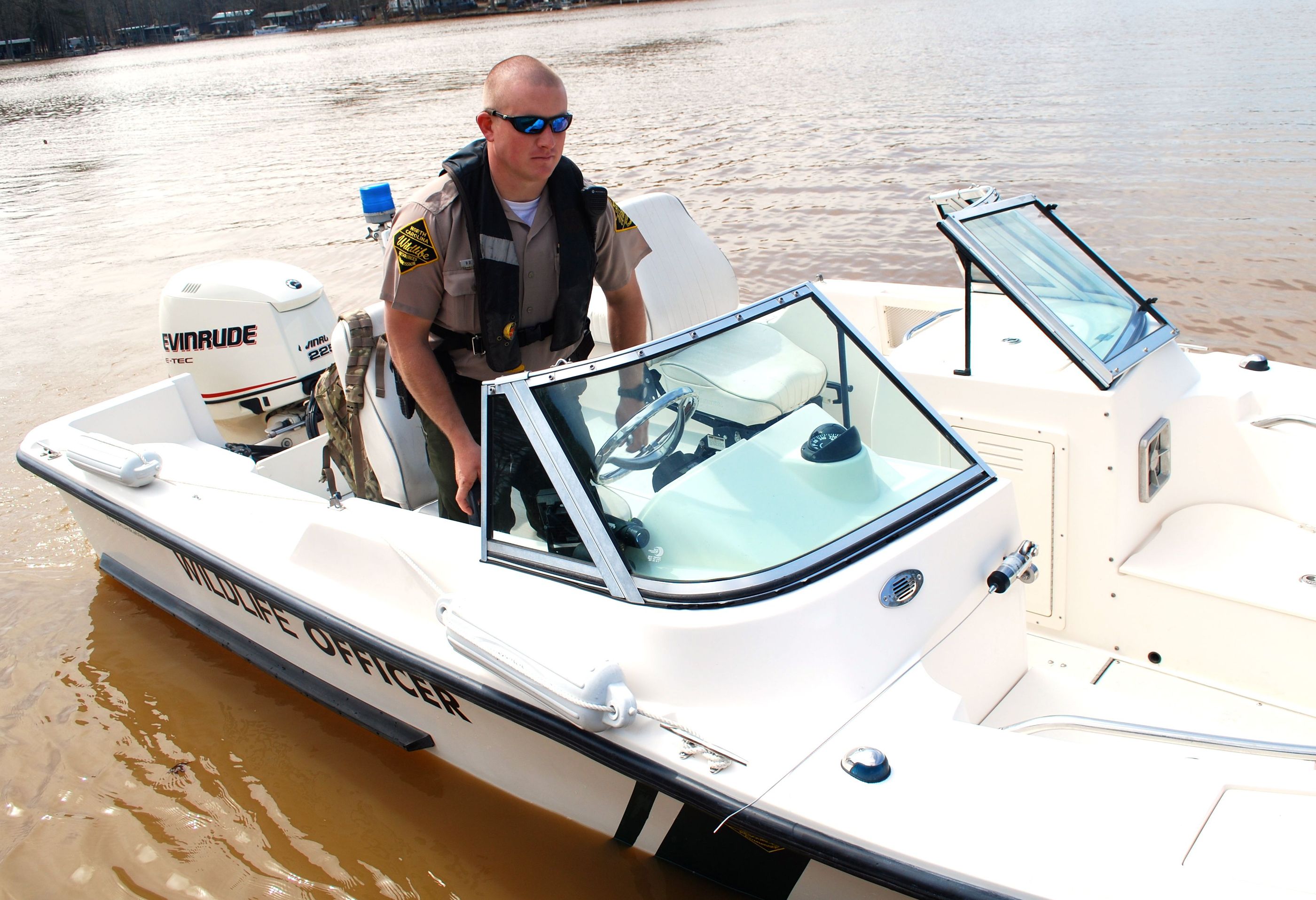Boating on High Rock calls for caution
Published 12:00 am Sunday, April 20, 2014
Accidents can happen on the water. Most boaters acknowledge this, but safety measures at times take a back seat to fun. This is a mistake on any body of water, especially on water with the unique dangers of High Rock Lake.
On May 25, 2013, the distant, imagined scenario of a boating accident became a horrific reality for boaters in two vessels that collided in Swearing Creek on High Rock Lake.
“I was doing a pre-launch safety inspection and got the call around 12:30 p.m.,” says N.C. Wildlife Resources Officer Branden Jones. “When I arrived, the sheriff’s department was there, and two severely damaged boats were tied up to docks.”
A pontoon boat and ski boat were driving toward each other, rounding a slight curve of Swearing Creek in a place “that may be a little more narrow but a lot like other parts of the lake,” Jones says.
The ski boat operator was engrossed with his mechanical gauges during his first time on the water that year, Jones said. The driver on the pontoon boat saw the ski boat approaching but was unable to maneuver quickly enough to get out of the way.
“The ski boat operator looked up at the last minute, but it was too late,” Wildlife Resources Sgt. Anthony Sharum says. “The ski boat ended up hitting the pontoon in the dead center of the bow.”
On board the pontoon were operator William Britt, 33; his 3-year-old son, William “Jaiden” Britt; his pregnant wife, Melissa Chambers Britt, 32; and Melissa’s brother, Michael, 37. The collision threw Jaiden and Melissa into the water, and by the time William Britt had gotten his son into a passing boat, Melissa had drowned. Jaiden died in the hospital from a head injury.
“This incident occurred as a result of operator inattention,” Sharum says. The operator of the ski boat, Michael Greene, was charged with three counts of involuntary manslaughter.
“We all agree that (Greene) had no intention of running into anybody.”
One year later, the sadness lingers, and Jones believes the fatal accident forced many people to reconsider their habits on the water. “People took it to heart,” he says. “They have started being more aware of what’s going on.”
“Operator inattention” is the No. 1 cause of boating accidents statewide for five of the past six years. So increasing boaters’ attention is essential to keeping everyone safe.
Spanning 15,180 acres of water and 365 miles of shoreline in Davidson and Rowan counties, High Rock Lake is a massive body of water. It’s also heavily used for recreation and renowned for fishing. During the peak summer months, from late May through September, sometimes into October, High Rock buzzes constantly with activity.
The Memorial Day, July 4th and Labor Day holidays and any summer weekend from Friday night through mid-Sunday can sometimes seem like rush-hour on the interstate in Atlanta.
Jones advises inexperienced boaters to avoid these congested times on High Rock.
“The water – a lot of people don’t realize and take it for granted – it’s dangerous,” Jones says.
The dark tint of High Rock’s water is just one of the challenges that boaters and swimmers face. “It’s muddier than other lakes by far. You can put your hand in the water and not see it,” he said.
Another unusual danger on High Rock is debris. High Rock is the first in a chain of lakes, and all the debris from the long stretch of the Yadkin River flows directly into the lake. “This is the first time I’ve seen any debris like that,” Jones says, pointing to a huge tree trunk, roots and all, floating in the middle of the channel. “It could flip a boat, put a hole in a boat.”
Debris is always at its worst after a large storm. “Don’t assume there’s nothing there,” Jones urges boaters. “It could also be a person or a fallen skier bobbing in the water.”
And similar to other reservoir lakes, High Rock’s much harder to navigate because of its sprawling, labyrinthine shape.
“High Rock’s not round. I could be 10 miles in either direction from where a problem is at,” Kim Barringer, Rowan County deputy sheriff and High Rock patrol deputy, says. “We’ve run into several people just lost, no idea where they were.”
In an emergency, boaters should call 911. Depending on a boater’s location, though, “it may be 45 minutes to an hour before someone gets to you,” Sharum says.
That High Rock straddles two counties and such a broad expanse of land presents challenges to the authorities responsible for maintaining safety on the lake. The Wildlife Resources Commission and sheriff’s departments from both counties patrol the lake, enforcing laws and promoting safe boating. Rowan and Davidson county rescue squads, along with fire departments from bordering jurisdictions, assist in emergencies.
“Managing a lake this size is a daunting task,” Barringer says.
“N.C. Wildlife’s mission is to conserve wildlife resources and promote safe, responsible boating and public safety,” Sharum says. The commission does this through boater safety education, public-awareness campaigns, pre-launch boater safety inspections and proactive law enforcement.
For the sheriff’s office, “our focus is more on criminal activity, but we do middle between enforcement and assistance,” Barringer says. Rowan County has two deputies, Barringer and Lonnie Melton, dedicated to lake patrol from Memorial Day through Labor Day.
“We’re always out full time on weekends and as required during the week,” he says.
The same schedule applies for the Davidson County Sheriff’s Office, which also staffs two public swimming areas during peak weekends.
When trouble occurs, Rowan and Davidson rescue squads assist in all types of rescue. On High Rock, rescues are most commonly missing or lost people and possible drownings. “The lake’s been full, and last year was a busy year,” Eddie Cress, chief of Rowan County Rescue, says.
Earlier this year, the rescue squad responded to a call after a boat with three duck hunters capsized 50 feet from shore. The air temperature was just 22 degrees. After managing to swim ashore, the boaters were able to call 911. “We had three or four boats in the water to get those guys in. They were very lucky,” Cress says. “That’s just one of the types of calls that we do.”
State regulations on boater certification and flotation devices have gotten stricter. (See story above).
A boater must have these safety items on board at all times: serviceable, accessible, properly-fitting, U.S. Coast Guard- approved personal flotation devices; a U.S. Coast Guard- approved, charged fire extinguisher; a throw-able float (round ring or cushion); and boat registration.
“Whoever’s operating the boat is responsible for every person on the boat,” Jones says. “I think a lot of people don’t realize that.”
Sadly, the High Rock community has already learned there is no “typical day” on the water. “Even if you’ve been on the lake for 20 years, it could happen any time,” Jones says.
Adds Barringer: “Boat safe, boat sober, and boat aware.”






